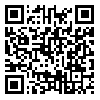Volume 8, Issue 2 (2020 2021)
JRH 2021, 8(2): 19-27 |
Back to browse issues page
Download citation:
BibTeX | RIS | EndNote | Medlars | ProCite | Reference Manager | RefWorks
Send citation to:



BibTeX | RIS | EndNote | Medlars | ProCite | Reference Manager | RefWorks
Send citation to:
Torki M, Heidari H, Norian K, Rabieie L, Sedahi M. Prayer on the Severity of Pain in Patients Undergoing Lithotripsy. JRH 2021; 8 (2) :19-27
URL: http://jrh.mazums.ac.ir/article-1-621-en.html
URL: http://jrh.mazums.ac.ir/article-1-621-en.html
PhD in Nursing, Faculty Member of Nursing and Midwifery School, Shahre-kord University of Medical Sciences, Shahrekord, Iran
Abstract: (3673 Views)
Background and Purpose: Urinary stones are the third most common genital tract disease after urinary tract infections and prostate diseases. Extracorporeal Shock Wave Lithotripsy (ESWL) is the most common treatment for more than half of all kidney stones. Most patients experience pain during the surgery, despite the use of pain killer after ESWL. This study aimed to investigate the effect of prayer on pain in the patients who underwent ESWL.
Materials and Methods: This clinical trial was performed on 120 patients who were referred to Ayatollah Kashani Hospital, Shahrekord, Iran, for ESWL in 2018. Patients were divided into two experimental and control groups. In addition to the reception of routine care, the test group repeated the prayer “peace be upon Mohammad and his descendants” during ESWL. However, the control group only received routine care. The pain score was determined using McGill Pain Questionnaire and the collected data were analyzed in SPSS software (version 20) through descriptive statistics and t-test.
Results: The scores of pain variations in the prayer (intervention) and control groups were estimated at -11.10±10.13 and -1.85±8.67, respectively. Based on the results obtained from the Tukey test, there was a significant difference between the two groups in terms of pain variations (P=0.001). There was a significant difference between the mean drug use in the control and experimental groups (P=0.01).
Conclusion: This study showed that prayer therapy reduced the pain of the patients who underwent ESWL.
Materials and Methods: This clinical trial was performed on 120 patients who were referred to Ayatollah Kashani Hospital, Shahrekord, Iran, for ESWL in 2018. Patients were divided into two experimental and control groups. In addition to the reception of routine care, the test group repeated the prayer “peace be upon Mohammad and his descendants” during ESWL. However, the control group only received routine care. The pain score was determined using McGill Pain Questionnaire and the collected data were analyzed in SPSS software (version 20) through descriptive statistics and t-test.
Results: The scores of pain variations in the prayer (intervention) and control groups were estimated at -11.10±10.13 and -1.85±8.67, respectively. Based on the results obtained from the Tukey test, there was a significant difference between the two groups in terms of pain variations (P=0.001). There was a significant difference between the mean drug use in the control and experimental groups (P=0.01).
Conclusion: This study showed that prayer therapy reduced the pain of the patients who underwent ESWL.
Type of Study: Original Research |
Subject:
پرستاری
Send email to the article author
| Rights and permissions | |
 |
This work is licensed under a Creative Commons Attribution-NonCommercial 4.0 International License. |






